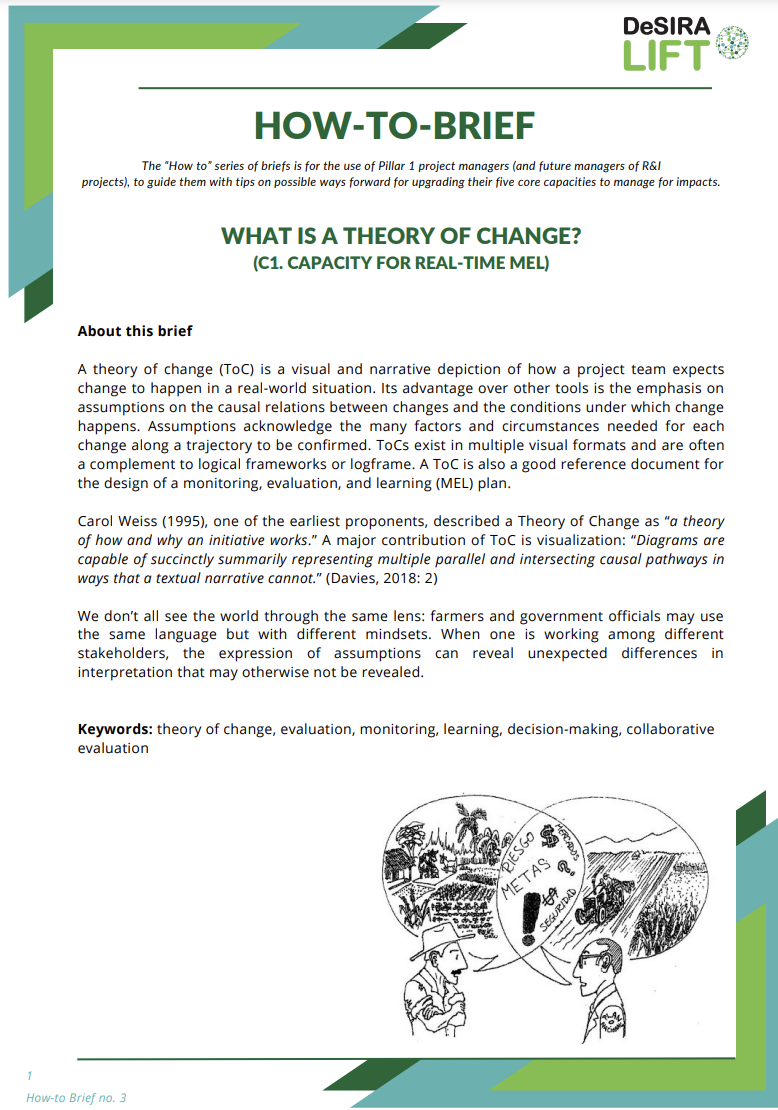About this brief
A theory of change (ToC) is a visual and narrative depiction of how a project team expects change to happen in a real-world situation. Its advantage over other tools is the emphasis on assumptions on the causal relations between changes and the conditions under which change happens. Assumptions acknowledge the many factors and circumstances needed for each change along a trajectory to be confirmed. ToCs exist in multiple visual formats and are often a complement to logical frameworks or logframe.
A ToC is also a good reference document for the design of a monitoring, evaluation, and learning (MEL) plan. Carol Weiss (1995), one of the earliest proponents, described a Theory of Change as “a theory of how and why an initiative works.” A major contribution of ToC is visualization: “Diagrams are capable of succinctly summarily representing multiple parallel and intersecting causal pathways in ways that a textual narrative cannot.” (Davies, 2018: 2)
We don’t all see the world through the same lens: farmers and government officials may use the same language but with different mindsets. When one is working among different stakeholders, the expression of assumptions can reveal unexpected differences in interpretation that may otherwise not be revealed.
Keywords: theory of change, evaluation, monitoring, learning, decision-making, collaborative evaluation


